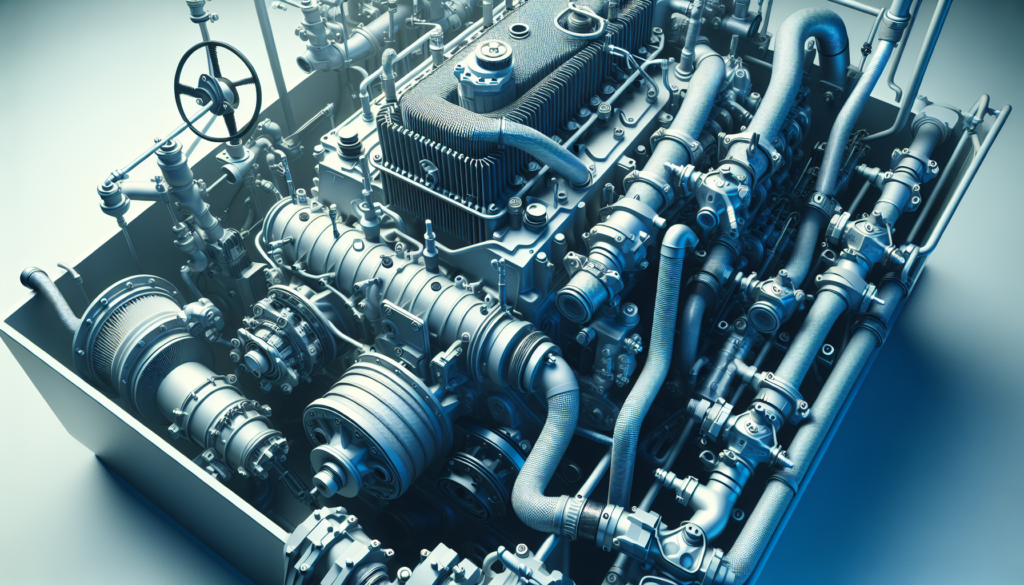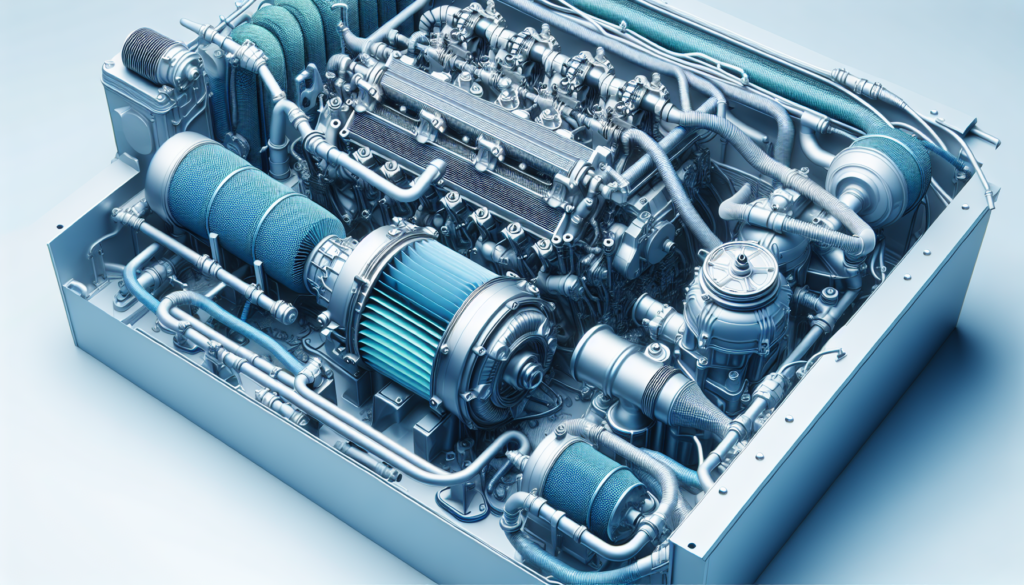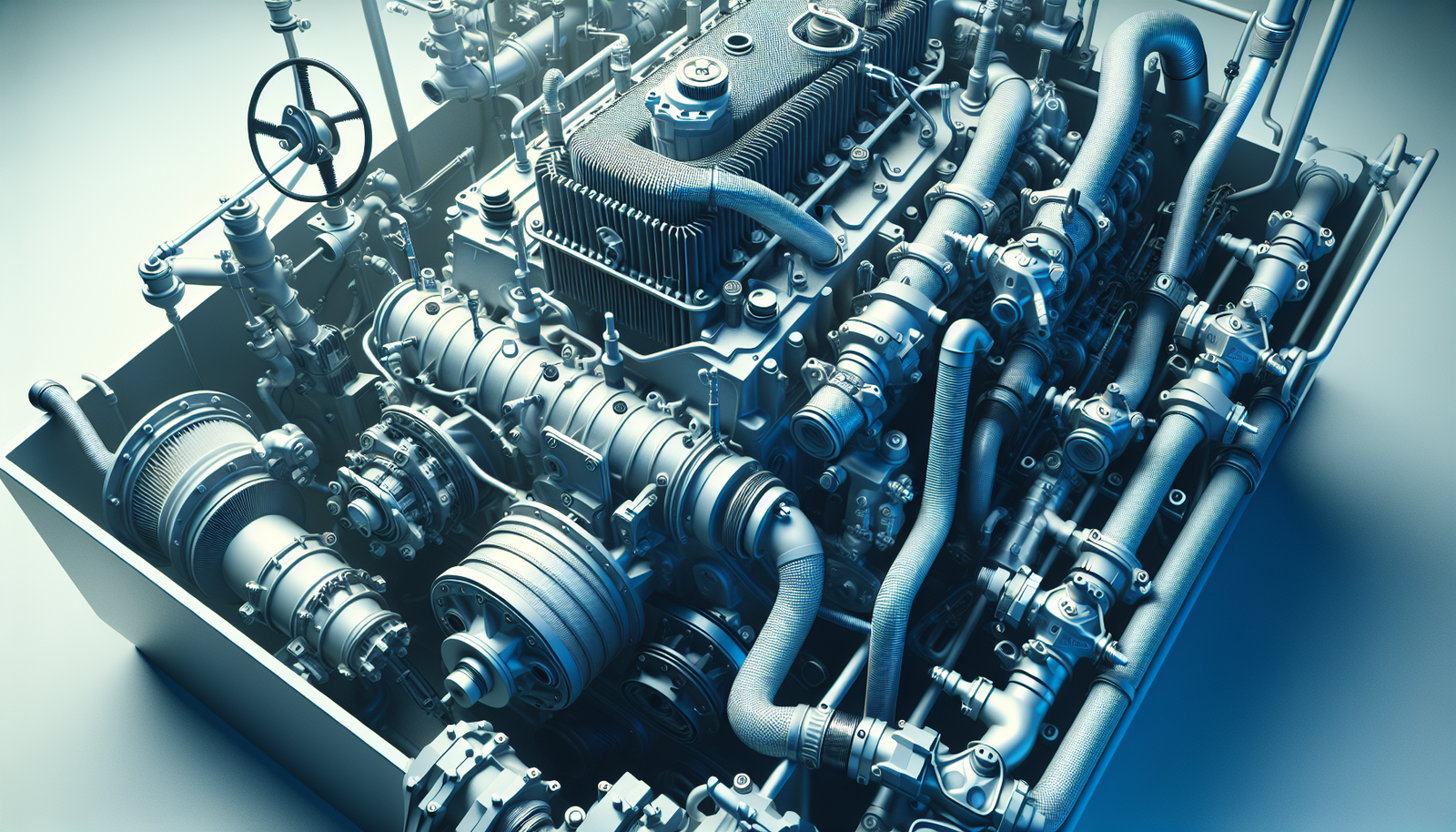Imagine setting sail on a beautiful sunny day, only for your boat’s engine to overheat, leaving you stranded. Your boat’s cooling system is crucial to ensuring smooth sailings and protecting your engine from overheating. The article “Best Practices For Boat Engine Cooling System Maintenance” provides you with comprehensive instructions and expert tips to safeguard your boat engine’s cooling system. This knowledge will equip you with the right tools to extend your boat’s lifespan, enhance its performance and save you from any unnecessary, costly repairs. Keep your sailing adventures hassle-free with a well-maintained, efficient cooling system for your boat’s engine.

Understanding the Boat Engine Cooling System
Knowing your boat’s engine cooling system is crucial for any boat owner. It can extend the life of your engine and ensure that your boating trips go smoothly without any unexpected engine troubles that could leave you stranded in the water.
Basic Functions of the Cooling System
Every boat’s engine, like any other engine, produces a lot of heat as it operates. Too much heat can damage the engine, causing it to seize up or even catch fire. That’s where your boat’s engine cooling system comes in. It works by using coolant, usually a mixture of antifreeze and water, to absorb the heat from the engine and then dissipate it back into the environment.
Different Types of Boat Engine Cooling Systems
There are generally two types of cooling systems for boat engines – the open, or raw water, cooling system and the closed, or freshwater, cooling system. In an open system, water from the surrounding environment is used directly to cool the engine. Closed systems, on the other hand, utilize a coolant mix, recycling it within the engine. Each type has its advantages and challenges, so it’s necessary to consider which system your boat has for effective maintenance.
Why Cooling System Maintenance is Essential
Without proper maintenance, your cooling system can fail, leading to overheating, decreased performance, increased fuel consumption, and even severe engine damage. By keeping your cooling system in top shape, you can ensure your engine performs at its best and prolong the life of your boat’s engine.
Regular Inspection of the Cooling System
Consistency is crucial when it comes to maintenance, and regular inspections are an integral part of preventive maintenance.
Importance of Routine Checks
Routine inspections help catch potential issues before they turn into costly, time-consuming problems. They give you an opportunity to replace worn-out parts, clean the system, and ensure that everything is running optimally.
Items to Inspect Regularly
Key components to check include the sea strainer, hoses, belts, thermostat, coolant levels, and the water pump. Always be on the lookout for leaks, clogs, corrosion, and damage to these components.
Identifying Signs of Potential Problems
Identifying issues early means knowing what to look for. Signs such as unusual engine noise, overheating, decreased engine performance, visible leaks, and an unexpected increase in fuel consumption can all indicate potential problems with the cooling system.
Replacing the Thermostat
The thermostat plays a key role in managing engine temperature. However, like any part, it can wear out over time, impacting the cooling system’s efficiency.
Reasons for Replacing the Thermostat
If your boat engine is consistently running too hot or too cold, this could indicate a problem with the thermostat. Overheating can occur if the thermostat fails to open, while running cold can occur if the thermostat is stuck open. In both cases, replacing the thermostat is necessary to restore the cooling system’s optimal function.
Choosing the Right Thermostat for Your Boat Engine
When replacing the thermostat, it’s crucial to choose the right one for your specific boat engine. Different engines require different thermostat types and settings, so always refer to your boat’s manual or contact the manufacturer if you’re unsure.
How to Replace a Thermostat
Replacing a thermostat isn’t a labor-intensive task and can generally be done with basic hand tools. However, you should always ensure your engine has fully cooled down before attempting to replace the thermostat. After replacing it, always check for leaks and ensure that your engine reaches its normal operating temperature.

Coolant Level and Quality Checks
The coolant is a major player in your engine’s cooling system. Therefore, regular checks on its level and quality are essential.
Why Coolant Quality Matters
The quality of the coolant can greatly affect how well your cooling system works. If the coolant is dirty or diluted, it won’t absorb and dissipate heat effectively, leading to increased engine temperatures.
How to Properly Fill and Check Coolant Levels
Usually, there’s a marked indicator on the side of the coolant reservoir showing the minimum and maximum levels. Always make sure that the coolant level is between these two marks when the engine is cool. To check the coolant quality, look at its color. If it appears cloudy or has debris floating in it, it might be time for a change.
Solutions for Coolant-Related Problems
If you’re struggling with coolant-related problems, like leaks or poor coolant quality, flushing the system and refilling it with fresh coolant can significantly help.
Cleaning and Flashing the System
Cleaning and flashing are vital to the maintenance of your cooling system. Over time, your system can accumulate buildup that hinders its performance.
Importance of Cleaning and Flushing the Cooling System
Flushing and cleaning remove harmful contaminants such as mineral deposits, rust, and debris, allowing coolant to flow freely and cool your engine more effectively.
Proper Tools and Materials Needed
You’ll need a cooling system cleaner, a flush kit, a catch pan for the old coolant, and a supply of fresh coolant and distilled water.
Proper Steps to Flushing the Cooling System
First, isolate the cooling system and drain the old coolant. With the system still open, add the cleaning agent and fill with water. Run the engine to circulate the solution, then drain it again. Finally, refill the system with fresh coolant to the appropriate level.
Maintaining the Water Pump
The water pump is a crucial part of your engine’s cooling system, responsible for circulating coolant through the engine.
Understanding the Role of the Water Pump
The water pump ensures that the coolant is continuously flowing, absorbing heat from the engine and carrying it to the radiator for dissipation.
Signs of a Failing Water Pump
A failing water pump can lead to overheating, leakage of coolant from the pump, an unusually noisy pump, and even engine failure.
Water Pump Replacement Tips
Replacement should be done by a professional, but if you’re experienced, make sure that the new pump is compatible with your engine.
Dealing with Overheating Problems
Overheating is the most common problem associated with cooling systems. Here’s how to handle it.
Common Causes of Boat Engine Overheating
These include a failing water pump, blocked passages, a damaged impeller, or a worn-out thermostat.
Troubleshooting Overheating Issues
Look for visible issues such as leaks, clogs, or worn out parts. Run the engine to verify its operating temperature and inspect the coolant levels and quality.
Preventing Overheating in Future
To prevent overheating, always keep an eye on your engine temperature, regularly inspect and maintain your cooling system components, and immediately address any problems.
Winterization of the Cooling System
When winter comes around, it’s crucial to prepare your cooling system for the low temperatures.
Why Winterize the Cooling System
Winterizing prevents freezing temperatures from cracking your engine block or causing other problems.
Steps to Properly Winterize
Drain the system, thoroughly clean it, then fill with a non-toxic antifreeze.
Tips for Maintaining the Cooling System in Winter Months
Regularly check antifreeze levels and don’t attempt to start the engine unless you have ensured that it’s unfrozen.
Professional Boat Engine Cooling System Maintenance
While some maintenance tasks can be done by yourself, certain situations will require professional help.
When to Seek Professional Help
If you’re dealing with an overheating problem that persists after initial troubleshooting, or if you’re unsure about performing certain tasks yourself, it’s best to seek help from a professional.
Choosing a Reputable Service Provider
Look for providers who specialize in your type of boat engine, have positive reviews, and offer comprehensive services.
What to Expect from Professional Maintenance
A professional should conduct thorough inspections, identify and resolve issues, clean the system, replace necessary parts, and give you tips for maintaining the system.
Long-Term Care for the Boat Engine Cooling System
With the right care, your cooling system can serve you well for years.
Practices for Extending System Life
Regular inspections and maintenance, using quality coolant, addressing issues promptly, and winterizing can all extend the life of your cooling system.
Maintaining System Efficiency
Maintaining optimal coolant levels, ensuring the thermostat and water pump function properly, and keeping the system clean can all increase efficiency.
Understanding the Signs of System Aging and Dealing with them Proactively
As your cooling system ages, it may become less efficient, more prone to leaks, and parts like the water pump may wear out faster. Be sure to regularly check and replace aging parts, and consider a complete system overhaul if necessary. By doing so, you extend the lifespan of your boat engine and ensure many exciting adventures on the water.

